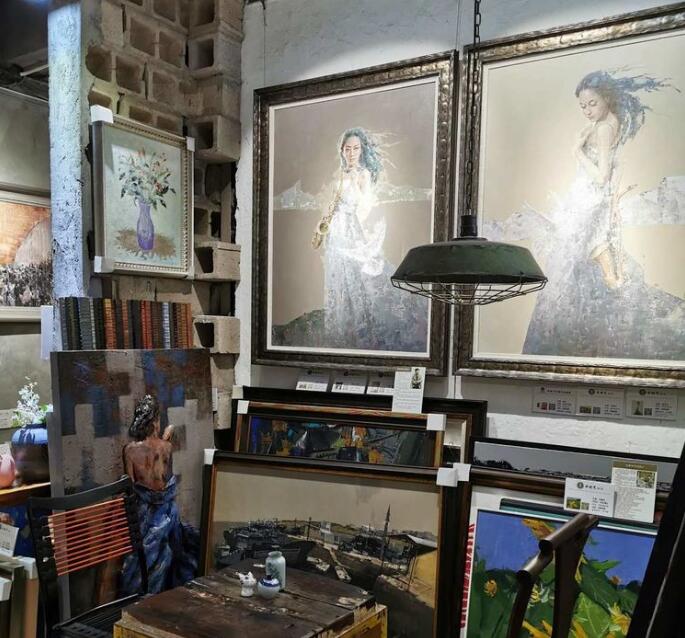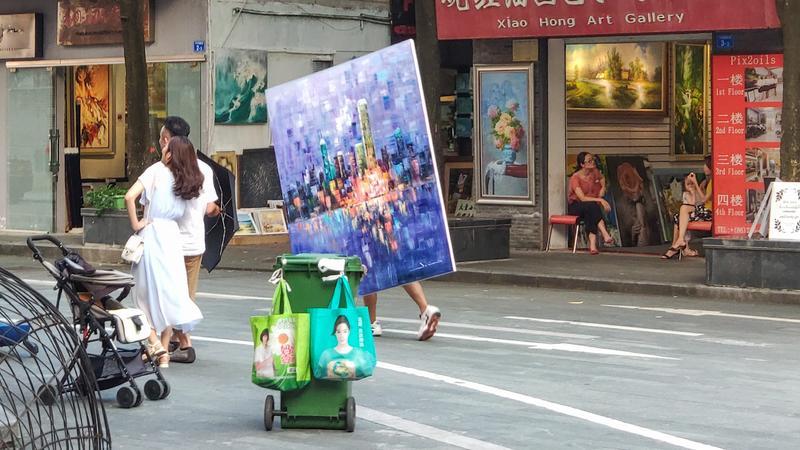Dafen oil painting Village
Why has Shenzhen Dafen Oil Painting Village become a major market for art sales in the world?
Dafen Village, located on the outskirts of Shenzhen, a major industrial city in China, presents a stark contrast to the city’s industrial landscape with its unique cultural industry cluster. This small village, spanning only 0.4 square kilometers, has earned the title of “China’s No. 1 Oil Painting Village” and has become a legendary site in the development of China’s cultural industry, housing a world-renowned oil painting base.
At its peak, Dafen Village accounted for over 70% of the international market share for oil paintings. Even today, the annual output value of Dafen Oil Painting Village reaches several billion yuan. The question arises: How did such a small area become a major market for art sales worldwide?
The Spark that Ignited a Cultural Industry
The journey of Dafen Oil Painting Village began much later than Shenzhen’s industrial clusters. In 1979, Shenzhen was designated as a pilot Special Economic Zone, but Dafen Village, located in the Longgang District under the jurisdiction of Buji Street, missed out on this opportunity due to its location outside the Second Line (a control line established to regulate the flow of goods and people into the Special Economic Zone), resulting in a per capita annual income of less than 200 yuan before the reform and opening up of China.
The village’s fortunes changed a decade later when Huang Jiang, a Hong Kong art dealer, discovered Dafen Village. Huang had been in the oil painting business since the 1980s, serving clients like Walmart and facing a constant overflow of orders. To meet market demand, Huang established an oil painting factory in mainland China, initially choosing Shenzhen’s Huangbeiling due to its proximity to Hong Kong and the ease of accessing market information from Hong Kong.
However, after three years, difficulties in accessing the city area due to customs barriers forced Huang to relocate his business to Dafen Village. The village’s location near Shenzhen and Hong Kong, along with its lower rent and labor costs, offered unique advantages.
In 1989, Huang Jiang and a dozen painters rented a house in Dafen and laid the foundation for what would become a significant cultural industry cluster.
The Rise of Dafen Oil Painting Village
Under Huang’s leadership, Dafen Oil Painting quickly gained fame and attracted painters from all over, including some well-known artists. Initially, sales depended on art dealers who would purchase the paintings to sell through Hong Kong. It wasn’t until after 1998 that, with government policy support, Dafen Oil Painting began to sell directly, bypassing middlemen.
The village’s strategic location and the growing demand for decorative art, especially from the international markets in Europe, America, and the Middle East, contributed significantly to its success. By 2005, Dafen’s oil painting sales had exceeded 200 million yuan, with 90% of its products exported, primarily to Europe, America, and the Middle East. The “Dafen model” of producing high-quality, cost-effective art significantly undermined the Korean oil painting industry, which had previously dominated the global market.
Challenges and Innovation
Despite its success, Dafen Village faced challenges, including the 2008 financial crisis, which hit the export-oriented oil painting industry hard. In response, the local government and artists began focusing on fostering originality and innovation, although transitioning to original creations proved difficult for many artists.
Today, Dafen Village continues to host over 8,000 cultural industry practitioners, expanding beyond oil painting to include various art forms and activities. While it may no longer be at its peak, Dafen Village’s rise as a hub for affordable art is a testament to the unique trajectory of China’s cultural industry development, marked by both remarkable achievements and significant challenges.


